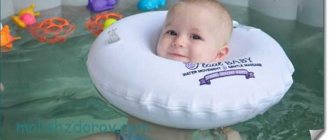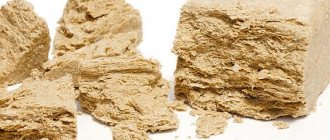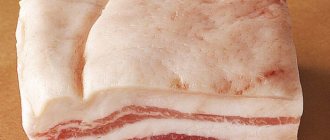Our grandmothers, mothers, and you and I too, bathed in pink water with potassium permanganate in our infancy. Potassium permanganate (potassium permanganate in common parlance) is added to the baby's bathing water for the purpose of disinfection. This has been done from generation to generation. But it turns out that potassium permanganate kills bacteria only in a concentrated solution, and highly diluted potassium permanganate for bathing newborns does not have the necessary disinfecting effect. It turns out that we add potassium permanganate only for self-soothing. Placebo is also a “dummy”, but sometimes it helps if you believe in its healing powers.
How to bathe a baby
Until the umbilical wound has healed, pediatricians do not recommend bathing a newborn with immersion. For the first month, only boiled water is used for water procedures. The room should not be hot, the optimal air temperature is 20-22 °C.
According to Dr. Komarovsky, a baby needs bathing not because he is dirty, the child does not load coal and does not dig up the garden, but for the purpose of hardening the little organism.
You have recently become young parents and all the procedures associated with the baby are exciting and a little scary. It’s good if there is an experienced adult nearby who can help bathe and change the diaper. Of course, you should listen to the advice of grandmothers, but it is more correct to follow the recommendations of an experienced pediatrician.
If you feel safer bathing your newborn in potassium permanganate, then do so. Doctors don't prohibit it.
How to dilute potassium permanganate for bathing
And now the newborn is about to have his first bath with potassium permanganate. How to properly dilute potassium permanganate for bathing a newborn?
The solution of potassium permanganate should always be diluted fresh for bathing, and under no circumstances should potassium permanganate crystals be thrown directly into the bath. Crystals that are not completely dissolved can cause chemical burns to delicate skin. To prepare a solution of potassium permanganate for bathing a newborn in the correct proportion, you need:
- Pour 5-7 potassium permanganate crystals into a clean glass;
- Pour hot boiled water and stir until completely dissolved. Manganese will not dissolve in cold water. The liquid acquires a bright purple color;
- Be sure to strain the diluted solution through gauze folded in several layers. And evaluate the solution against the light, checking whether there are any undissolved crystals left;
- Pour the prepared solution into the previously prepared bathing water and stir until the water becomes evenly pink.
How to make baths with potassium permanganate
Baths with the addition of potassium permanganate can be hot, warm or cool, depending on the specific disease. But the algorithm for their preparation is the same in any case.
- A wide shallow basin is thoroughly washed and scalded with boiling water for disinfection.
- Water at the required temperature is poured into the container and potassium permanganate is added.
- The crystals are thoroughly stirred until completely dissolved.
- They are immersed in the container entirely or partially depending on the ailment.
- At the end of the procedure, blot the skin with a terry towel without rubbing.
Cool baths take only 5-7 minutes, warm and hot ones - up to 20 minutes. When treating hemorrhoids, gynecological inflammations and anal fissures, an enema is given before the procedure and washed with clean water.
Attention! The potassium permanganate solution should have a pale pink color. It is better to dilute the substance in water in light containers, then it will be more convenient to control the concentration.
How to properly dilute potassium permanganate for baths
Potassium permanganate can be added to water directly into bathing containers. But for convenience, it is recommended to make the solution in a separate basin or wide bowl, and then pour it into the bath in finished form. In this case, possible sediment will remain at the bottom of the first container and will not cause burns if it comes into contact with the skin or mucous membranes.
How much potassium permanganate to add to the bath
The proportions for baths with potassium permanganate for hemorrhoids and other ailments may vary slightly. But usually 1-2 small spoons of crystals are added to 10 liters of liquid.
The concentration of a manganese bath is determined by the color of the water; it should not be too dark
How much potassium permanganate to add to a baby bath for bathing a newborn
Baths with potassium permanganate are recommended not only for adults, but also for newborns. Potassium permanganate helps well with dermatitis and prickly heat, diaper rash and urticaria. Some pediatricians advise using it even immediately after discharge from the hospital to speed up the healing of the umbilical wound.
When preparing a bath for a baby, it is especially important to maintain safe proportions. The solution is made like this:
- 6-7 crystals of potassium permanganate are diluted in a glass of water.
- Stir until the particles are completely dissolved.
- Strain the resulting dark purple liquid through cheesecloth into a clean container to separate any possible sediment.
- Pour into a filled bathtub and stir again.
The water should eventually take on a light pink tint.
Attention! Before using a bath with potassium permanganate for a child, you should consult a pediatrician. In some cases, the substance can cause harm.
How long to take a bath with potassium permanganate
An adult should take a full or sitz bath with potassium permanganate for 10-15 minutes. For children, the time is even shorter - only 5-7 minutes.
We recommend reading: Food additive E450: dangerous or not, effects on the body
Baths with potassium permanganate for feet, nails, foot fungus
You can make a foot bath with potassium permanganate for foot and nail fungus, excessive sweating and unpleasant odor of the lower extremities. Typically, potassium permanganate is used as follows:
- Pour about 3 liters of boiled hot or warm water into the basin.
- Add a few crystals of potassium permanganate and stir until a light pink hue is obtained.
- Place your feet in the water and hold for 15 minutes.
- After the procedure, blot the skin with soft napkins or a towel.
For excessive sweating of the feet, baths with potassium permanganate and salt also have a good effect. Food powder dries the skin and prevents the development of fungus.
Baths with potassium permanganate for cystitis
Baths with potassium permanganate help warm the pelvic area and at the same time have an antiseptic effect, eliminating the pathological process in the urinary tract. The procedures relieve inflammation and reduce pain, and help remove bacteria from the body. They are carried out as follows:
- A light pink solution of potassium permanganate for the bath is poured into a wide, shallow basin.
- They are lowered into liquid with a temperature of no more than 38 °C with the lower part of the body.
- Cover your legs from hips to feet warmly to prevent hypothermia.
- Continue the procedure for 15 minutes and then gently dry the skin with a towel.
Immediately after a bath with potassium permanganate, you need to put on warm underwear and socks to prevent a sharp change in temperature in the pelvis.
Baths with a solution of potassium permanganate prevent the development of secondary infections in cystitis
How to properly make and use baths with potassium permanganate for hemorrhoids
You can take baths with potassium permanganate for hemorrhoids; they not only relieve inflammation, but also soothe pain, stop bleeding and promote the resorption of nodes. The procedure is carried out according to the following algorithm:
- 10 liters of warm filtered water are poured into a wide basin.
- Dilute no more than 1.5 large spoons of dry potassium permanganate in liquid.
- Stir the crystals and check that the water has acquired a light pinkish tint.
- Immerse the lower body in the liquid and remain in a sitting position for 20 minutes.
At the end of the procedure, you need to blot the anus with a clean cotton cloth. It is recommended to additionally lubricate hemorrhoids with medicinal gel or sea buckthorn oil. In case of severe inflammation and pain, it is allowed to use anal suppositories immediately after the procedure, intended for disinfection and healing of mucous membranes.
Baths with potassium permanganate for hemorrhoids during pregnancy
Baths with potassium permanganate are not prohibited for use during pregnancy. They are made according to the standard algorithm - dilute the powder in warm water until a pinkish tint is obtained, and then immerse the buttocks in the liquid for 15 minutes. The bath temperature should not exceed 36-37 °C.
Excessive heating when carrying a child is dangerous, and in the later stages it is often uncomfortable for women to sit over the pelvis for a long time. Therefore, doctors advise replacing baths with lotions and washings with the same weak solution of potassium permanganate.
Baths with potassium permanganate after hemorrhoid surgery
Advanced hemorrhoids do not always respond to traditional treatment and may require surgical intervention. After hemorrhoidectomy, baths with potassium permanganate promote rapid healing of the skin and mucous membranes, and prevent the development of infections and inflammations.
The solution preparation algorithm is standard:
- Warm water is taken into a wide basin and a small amount of potassium permanganate is stirred in it.
- Gently wash the perineal area with neutral gel or baby soap.
- Sit in the prepared bath for 15 minutes.
- At the end of the period, blot the anus with a gauze pad or soft towel.
After hemorrhoid surgery, it is important not to rub the anus area after water procedures. If the anus is itchy and itchy, clean skin can be lubricated with an emollient cream.
You can use a solution of potassium permanganate after hemorrhoid surgery in the first days
Baths with potassium permanganate for balanoposthitis
Balanoposthitis is an infectious disease in men, which is accompanied by inflammation of the foreskin and glans penis. In complex treatment, a solution of potassium permanganate is often used; it dries the skin, kills bacteria and relieves itching and burning.
The following baths are prepared for local use:
- Warm clean water is poured into a small container.
- Add dry potassium permanganate powder into the liquid in small portions and stir until it turns pinkish.
- Check that there are no intact crystals left at the bottom, or filter the solution through cheesecloth into another container.
We recommend reading: Collagen or gelatin: which is better, reviews
In the finished product, the genital organ is washed for 5-7 minutes. The procedure can be carried out up to three times a day, the solution is made anew in each case.
Baths with potassium permanganate for anal fissure
Sitz baths with potassium permanganate for anal fissures prevent the development of inflammation, relieve pain and stop bleeding. They do it like this:
- Pour warm water with a temperature of no more than 37 °C into a shallow but wide container.
- Add potassium permanganate powder to the liquid until a pinkish solution is obtained.
- The buttocks are immersed in the container for 10-15 minutes, and then the anus is carefully blotted.
When bleeding from the anus, cool baths have a good effect; they help narrow the damaged blood vessels. They are prepared in the same way as regular ones, but the water temperature should be a maximum of 25 °C. Cool baths with potassium permanganate for hemorrhoidal bleeding are first taken for only 30 seconds, and then the duration is increased to five minutes.
Baths with potassium permanganate for thrush
Potassium permanganate effectively fights yeast-like fungi and has a good effect on thrush. Baths with potassium permanganate eliminate itching and burning, reduce the intensity of discharge. Make a solution like this:
- Pour warm but not too hot water into a wide basin.
- Stir dry potassium permanganate until the liquid turns pinkish.
- Lower the lower body into the pelvis for 20 minutes.
Warning! It is not advisable to carry out the procedure during menstruation - heating can cause increased bleeding.
Baths with a solution of potassium permanganate for thrush are recommended to be combined with the use of medicinal suppositories
Baths with potassium permanganate during pregnancy
Baths with potassium permanganate are not prohibited for women during pregnancy. They can be taken during exacerbations of cystitis and inflammatory processes in the genital tract, on their own or as part of a complex treatment.
In this case, it is necessary to use only warm water to prepare the solution, which does not burn the skin. It is advisable to reduce the time of procedures to several minutes. During pregnancy, it is dangerous to overheat the pelvic area; this stimulates uterine contractions and can lead to miscarriage or premature birth.
Basic rules for bathing a newborn
You need to bathe at the same time before going to bed. After an evening bath, children fall asleep better. The bath should be thoroughly washed with hot soapy water and scalded with boiling water. Close the windows. In advance, before undressing the baby, prepare everything necessary for bathing and subsequent dressing. First, you need to pour hot water into the bath, and then gradually pour in cold water. The optimal water temperature for swimming is 36-37°C.
Someone buys a special slide for swimming. There are many different types of them now: from plastic to fabric. But, as life experience shows, no device has been invented more convenient and reliable than my mother’s hand.
There should not be a lot of water in the bath during the first baths. It will be more convenient if the baby is wrapped in a thin diaper. The head should rest on the elbow of the bent right arm, and the palm of the same hand supports the back. With the other hand, carefully water the diaper, gradually wetting the body. After the baby has gotten used to the water, we slowly lower the diaper to the bottom of the bath.
Wash your face with clean water using a cotton pad, lather your hair and carefully rinse off the foam from your forehead back to the back of your head . Despite the large number of advertised products for bathing without tears, you need to wash the head, avoiding soap suds getting into the newborn’s eyes. Moreover, if the water contains a solution of potassium permanganate, which can lead to burns of the mucous membrane. To bathe the baby, use a soft soapy sponge, thoroughly washing all the folds.
After bathing, be sure to splash the child with water of the same temperature or a degree lower, holding him with his back to the top. Having wrapped the bathed baby in a towel or sheet, we wipe it with blotting movements. The baby should not be rubbed so as not to injure the delicate skin.
After water procedures, the folds are lubricated with cream or oil, and then the newborn is dressed. The baby should stay in the water for no more than 5 minutes. And you need to bathe with soap no more than 2-3 times a week to avoid dry skin.
Beneficial features
Still, in some maternity hospitals they still advise using potassium permanganate for water procedures for the baby immediately after discharge, despite the large number of opponents of such an event. After all, this anesthetic has a lot of useful properties:
- effectively fights infectious agents and microbes of various stripes, which love to attack delicate baby skin and a defenseless body with an unstable immune system (although experts say that usually a solution with a 0.01% concentration of powder is used to bathe a newborn, whereas pathogenic bacteria are completely destroyed a much stronger solution is available - from 0.1%, but it is dangerous for children's skin);
- promotes the speedy healing of the umbilical wound, which, when bathing with potassium permanganate, is not accompanied by any inflammation (when and how long does it take for a newborn’s navel to heal, as well as what to do if there are problems, see our article);
- has a low-aggressive effect on the skin of a newborn;
- does not destroy safe microflora along with microbes, unlike antibiotics;
- has a therapeutic effect for various skin diseases: dermatitis, miliaria, allergic rashes, diathesis, urticaria;
- disinfects diaper rash;
- perfectly disinfects the baby’s genitals;
- is not addictive;
- provides the possibility of long-term use if necessary.
After such a list of beneficial properties, it becomes unclear why this substance has caused such widespread aggression from pediatricians and dermatologists.
However, the opinion of experts cannot be discounted. Therefore, before making a solution of potassium permanganate for a newborn’s bath, evaluate the degree of risk that is present in such a water procedure.
Chemical educational program. In everyday life, this substance is known to everyone as potassium permanganate, while for scientists in laboratories it is potassium permanganate, or potassium permanganate, or the potassium salt of permanganate acid. Its chemical formula looks like KMnO4. Externally, it appears as black-violet crystals that dissolve in water and form a bright crimson-colored liquid.
Advantages of using potassium permanganate solution
As we already understood, it is recommended to bathe with potassium permanganate only until the navel is overgrown. And then the need for this disappears.
An even older generation advises treating the umbilical wound with a concentrated solution of potassium permanganate. Why these difficulties? Preparing a fresh solution every time is not an option for every mother. It is much easier to use hydrogen peroxide and regular brilliant green.
A solution of potassium permanganate is used to combat diaper rash. The appearance of these does not necessarily indicate poor care. Diaper rash often appears in babies prone to allergies and in chubby babies with many folds. You need to make a weak solution of potassium permanganate and wash the groin areas with it, and then arrange air baths so that the wet areas dry out.
What Doctor Komarovsky says
How to wrap a baby in a blanket - rules and recommendations
Children's doctor E. Komarovsky does not believe that baths with potassium permanganate are beneficial for the baby. His opinion: why use a weak solution of potassium permanganate if it is not effective as an antiseptic? If you achieve the effectiveness of the solution by increasing the concentration, it will be dangerous for the skin of the baby.
If you follow the rules for diluting potassium permanganate and safety when swimming, water treatments with potassium permanganate will not harm the baby. Therefore, they can be used, even if they are carried out only to reassure parents, according to Dr. Komarovsky.
Disadvantages of using potassium permanganate solution
Opponents of bathing with potassium permanganate claim that it dries the skin and can lead to dermatitis. No one denies the presence of a drying effect, but no one forces the use of potassium permanganate when bathing until adulthood. And after the bath, you can use either a special oil for moisturizing or simple boiled vegetable oil.
Another opinion why swimming in potassium permanganate is harmful. After birth, the baby’s body begins to be populated with beneficial microbiota. The term microflora is not entirely appropriate here, since flora is the plant world, and we are talking about living microorganisms. Not only the intestines are colonized (this period is accompanied by colic). In girls, the microbiota of the genital organs begins to form. If the baby is often bathed with potassium permanganate, then it gets on the vaginal mucosa and external genitalia, causing drying and killing beneficial microorganisms.
Under no circumstances should a child be given a solution of potassium permanganate orally if they are poisoned. If potassium permanganate crystals are poorly dissolved in a hurry, they can cause burns and even perforation of the digestive tract. It's better to call an ambulance.
Why add potassium permanganate solution to water?
Potassium permanganate is, first of all, a disinfectant. Helps heal the umbilical wound, fights diaper rash .
In addition, it can be used to treat skin diseases such as dermatitis, urticaria, prickly heat, allergic rashes, and diathesis. It is not addictive and makes it possible to use it for a long time.
Potassium permanganate kills microbes that cause various diseases, but leaves the microflora of the water favorable for the baby. Before bathing your child in potassium permanganate, it is recommended to consult with your pediatrician, because there may be contraindications: peeling and dry skin, advanced diaper rash with bleeding wounds, damage to the skin (scratches, cuts, cracks).
How else to bathe a child
And now the umbilical wound has healed, tribute has been paid to the ancestors, and bathing with a solution of potassium permanganate can be stopped. Most mothers think that bathing their child in plain tap water is “not right.” You definitely need to add something there. In the future, you can replace potassium permanganate with herbal infusions when bathing. An excellent recommendation on this matter is given by Dr. Komarovsky, who has become an authority for many mothers.
He advises bathing children even before the wedding in a bath with an infusion of string.
The solution is prepared simply:
- take a clean liter jar in the morning;
- add 1 glass of dried string;
- poured boiling water;
- We leave the closed jar to infuse until the evening bath.
It turns out to be an infusion for one bath. By the way, the series does not dry out the skin and treats rashes. You can also prepare infusions of chamomile, celandine and calendula.
Parents, you and only you are responsible for the health and well-being of your baby. He just recently came into this world, huge and dangerous. Your task is to help him adapt. Therefore, what to bathe with, how much and how to bathe, you decide.
When choosing a bathing product, it is best to be guided by your common sense and the recommendations of educated specialists, and not by the advice of grandmothers and neighbors. Let swimming bring only positive emotions to you and your baby.











